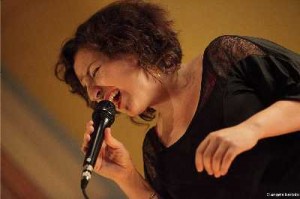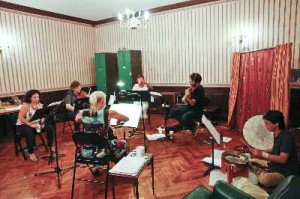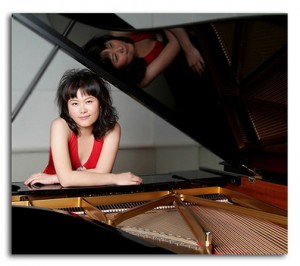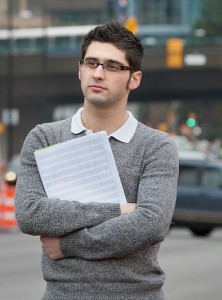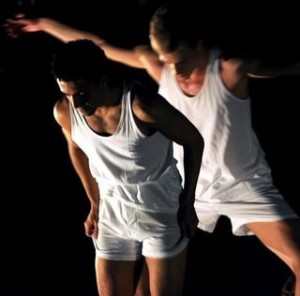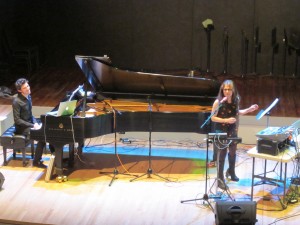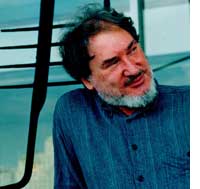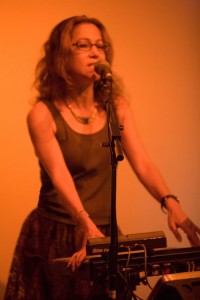
One of my favorite projects this past Fall was writing the program essay for American Composers Orchestra’s SONiC festival. I had the chance to interview several composers (though only a small sampling of the many fine participants) featured on SONiC, including Hannah Lash, Anthony Cheung, Keniji Bunch (an old friend – one of my classmates at Juilliard), and the National’s Bryce Dessner.
All of the interview subjects proved diverting. But I was particularly glad to have a chance in the essay to spotlight Ensemble Klang, a Dutch new music group that performed Oscar Bettison’s O Death on SONiC. Their performance was critically acclaimed as one of the highlights of the festival. And if you weren’t fortunate enough to be there, my recommendation would be to get thee hence to the group’s web store for a copy of the O Death studio recording (with liner notes by Alex Rose!).
While you’re there, I’d recommend checking out Ensemble Klang’s other studio recordings. Cows, Chords, and Combinations a portrait disc of minimalist composer/theorist/critic Tom Johnson has proved to be an extraordinarily valuable recording to me. It has reframed my thinking about the process-based components of minimalism: how they can be crafted into quite complicated structures and how they remain a vital component of whichever post (post post?) incarnation of minimalism we’re currently experiencing. The slowly evolving, spectral-inspired structures found on Waves, a disc of music by Peter Adriaansz, is equally engaging: a collection of soundscapes that require, nay demand, immersively intensive listening. (I haven’t yet heard Ensemble Klang’s recording of music by Matthew Wright; an oversight I hope to correct shortly).
Below, I’ve included an excerpt of my interview with Bettison, in which he discusses his creative process and the collaborative genesis of O Death.
___
Traditional instruments are one way to go in new music. Another is to find or create new instruments altogether. Such is often the pathway of composer Oscar Bettison. He enjoys incorporating unconventional instruments, such as those made from found objects or junk metal, into his scores.
Bettison says, “This was all a result of moving to Holland to study in the early 2000s. Before that, I had written a lot of music for traditional forces and I wanted to get away from that: to stretch myself as a composer. So, I started to play around with things, even going as far as to build some instruments; percussion mostly, but later on I branched out into radically detuning stringed instruments – there’s some of that in the guitar part of “O Death.” These things I called “Cinderella instruments: the kind of things that shouldn’t be ‘musical’ but I do my best to make them sing. And I suppose as a counterpoint to that, I shunned traditional instruments for a long time.”
Cinderella instruments, as well as references to popular music of many varieties, are signatures found in his work O Death, played on SONIC October 19, 2011 by Ensemble Klang.
Of O Death, Bettison says, “It was written for Ensemble Klang between 2005-7 and is my longest piece to date. It’s about 65 minutes long and I wrote it very much in collaboration with the group. We were lucky enough to have a situation in which I was able to try things out on the group over a long period. This was very important in writing it. The piece is in seven movements and is a kind of instrumental requiem, which references popular music elements (especially blues) and kind of grafts them on to the requiem structure. It’s something that I fell into quite naturally. This I think is tied to my idea of ‘Cinderella instruments:’ eschewing the “classical” tradition somewhat.”
Bettison continues, “The thing that a lot of people don’t know about me is that I come from a very strict classical background. I was a violinist; indeed I went to a specialist music school in London as a violinist from the age of 10. My rebellion to being in a hot-house classical music environment was getting into metal, playing the drums and listening to avant-garde classical music that was seen as outside the ‘canon’ and I think that carried on into my music. So, to psychoanalyze myself for a minute, I think I’ve done both things in a response (quite a delayed response!) to the classical tradition precisely because I feel so at home in that tradition.”
